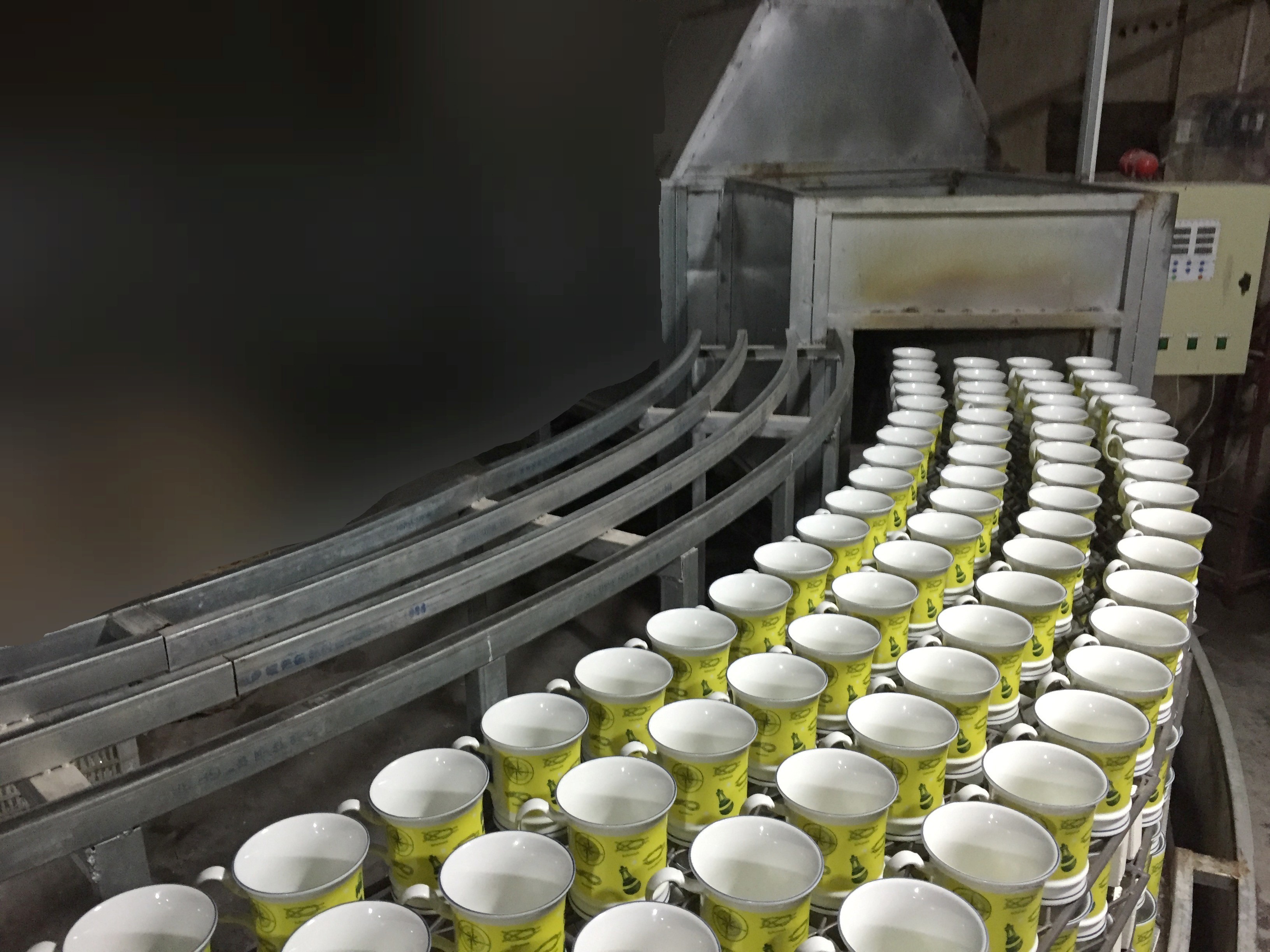Decoration Firing

Decorative firing - the final stage of porcelain finishing
The moulded porcelain body was smooth-fired into whiteware and the decoration was applied to this finished body in various processes. This decoration must now be thermally applied and consolidated in a further firing process to give it stability and strength. Due to the low porosity of porcelain, decorations, such as logos and vignettes, always have to be fired afterwards. This is the reason why decorative porcelain is always considerably more expensive than white porcelain. The type or position of the decoration does not matter.
Decorative kilns
There are countless types and shapes of decor firing kilns, most of which are designed for the type and design of the common decor variants of the respective factory. The picture above shows a circular firing kiln that is powered by electricity. Although this type of firing is relatively expensive, the firing temperatures can be set very precisely and the decorative porcelain is protected from further fogging by gas residues. The start-up times (on-off) of such electric kilns are also far superior to gas kilns. Such electric kilns are well suited for small production runs of up to 3,000 pieces per decor type and firing temperature.
Most Asian chamber kilns (block kilns) are also suitable for producing decorative porcelain in a separate firing process. The capacities are higher than those of the circular kilns and are fuelled with gas. Due to the synergetic utilisation of kiln and space, Asian factories are therefore more efficient and cheaper than European porcelain factories in the production of decorative porcelain.
Large quantities of equivalent decorative porcelain can also be fired in tunnel kilns. These are also usually fired with gas.
However, it is not the type and design of the kiln that is decisive for the decor, but the firing temperature used and the firing curve.
Types of decoration by firing temperature
Apart from the underglaze decorations, which are almost extinct today, the stability and longevity of any porcelain decoration depends exclusively on the firing temperature of the decoration firing. Holst Porzellan distinguishes between the following categories.
Advertising brand
This process does not originate from the porcelain industry and has nothing to do with "real decorative firing". Give-aways and promotional porcelain is applied to the item by screen printing or direct printing and then briefly heated. The temperature range is usually below 250 °C and therefore cannot achieve any stability or strength. The decorative colours quickly disappear after repeated rinsing.
Overglaze firing
The favourable firing method for porcelain decorations. The decoration is traditionally fired between 750-900 °C (according to Friedl). In our experience, however, using modern colour compositions, the firing temperature of onglaze decorations today is between 640 and 850 °C. The decorative colours are merely applied to the glaze of the white porcelain, making it "dishwasher-safe". More on this in our overglaze section.
Inglaze firing
The inglaze process is the most common firing method for decorative porcelain today. The firing temperature of the inglaze firing is so high that the glaze of the white porcelain is heated to a viscous state so that the decorative colours can sink into the glaze. Depending on the body and glaze, this takes place between 890 and 1,150 °C. Due to this high temperature, the choice of colours and colour gradients is very limited. Gold decorations, platinum rims and all other precious metals cannot be produced using the inglaze process. These metals would burn at the high temperatures. In-glaze decorations are dishwasher-safe (dishwasher-approved) and are also suitable for commercial use as hotel porcelain and catering tableware. The dishwasher resistance is more than 200 wash cycles according to DIN.
Underglaze firing
Underglaze decorations are fired together with the glost firing and do not require a separate decoration firing.
